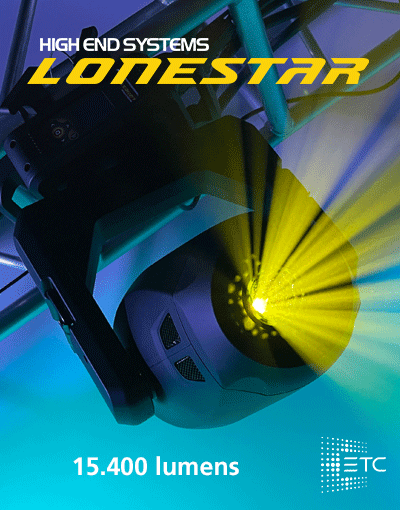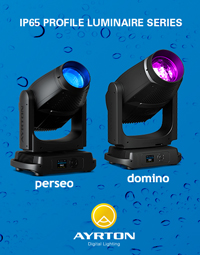We knew something big was waiting for us at Amadeus. And indeed there was. The talented, creative and innovative folks at the company went overboard to indulge the Philharmonie de Paris with the perfect monitoring system, with a contribution by Jean Nouvel as a bonus : the Philharmonia
SLU : How did the Philharmonia come about ?
Gaëtan Byk (Amadeus Marketing Director) : It’s a project we submitted to the Philharmonie de Paris. We had started working with them about four years ago on the various locations that needed to be fitted out. When the issue of the studios came up, the scenographers were planning on using existing Amadeus speakers such as the Digital ST 200 N, which are somewhat dated.
As we didn’t have 8-inch based monitoring systems available, and 15-inch based systems such as the 155 would have been too big, we offered to design a new product for their control rooms, including the third, smaller one.
SLU : How are these control rooms layed out ?
Gaëtan Byk : The Grande Salle (Symphonic Hall) and Salle de Répétition (Rehearsal Room) control rooms are both in 5.1 and will be fitted with 5 Philharmonia and a sub. Then, there will be a stereo pair installed in the Christophe Rosenberg room at the Pole Pédagogique (Pedagogic Department), along with a digital mixing console. The two other rooms are equipped with big Lawo mixing boards.
SLU : The LF driver in the Philharmonia is an 8-inch ?
Gaëtan Byk : Yes. Michel Deluc (Amadeus’ Director of Research & Development) started to work on curved shapes and laminar low-pressure vents, envisioning a two-voice bi-amplified model with an 8-inch transducer and an Esotar T330D tweeter, Dynaudio’s classic dome. As the Esotar costs $2000, being used in the audiophile segment of the market, we didn’t pursue that option.

A view on the soft dome tweeter manufactured by Morel, with modifications specified by Michel Deluc so that it better suits the routed pavilion, a trademark of Amadeus, that provides improved spatialization and phase coherency, as well as a little extra gain
SLU : A little expensive for a soft dome tweeter
Gaëtan Byk : Absolutely. Dynaudio do not make them anymore, so they can only be found in limited quantities, at absurd prices. The prototype on which we worked was however fitted with those, flush-mounted. The Philharmonie liked it a lot and ordered twelve of them based on that concept.
SLU : What did you choose to replace the Esotar in the end ?
Gaëtan Byk : Michel went with a tweeter from Morel, and after listening to the results, asked for some modifications so that it was better suited to the flush-mount set-up. They fine-tuned some aspects of the coil and the flange.

Notice the precise adjustment between the woofer and the speaker front panel. The woofer’s neutrality amazes, despite its 3.2 cm excursion
SLU : How about the woofer ?
Gaëtan Byk : The woofer comes from Sweden. It’s handmade by a team of enthusiasts. They are going to be difficult to obtain in large quantities because they only do very small runs. They feature triple-layer cones, and the wait for delivery to us is also triple! But it’s not a big deal, as the goal isn’t to sell truckloads of these speakers.
SLU : What has been used for powering and filtering ?
Gaëtan Byk : It’s all in-house designs. Two 700W RMS Class D amps, and 64-bit/96 kHz digital processing.
SLU : Fitting the electronics inside must have been a challenge, given the shape and the limited space available.
Gaëtan Byk : Everything is in the pedestal, which will also house the analog and digital inputs.
A birch mille-feuille

A view of the remarkable wood work done by hand in Amadeus’s carpentry workshop. This images shows why it’s barely impossible for this speaker to suffer from structural resonances.
SLU : How is the enclosure designed ?
Gaëtan Byk : It’s a complex process, that ultimately contributes to the charm of the Philharmonia. The enclosure is made of layered wood veneers.
Ordinary Finland press-glued 18 mm birch plywood boards. Once they are assembled, a 5-axis CNC router shapes the front panel area which loads the tweeter and helps with directivity.
The pedestal was originally shaped like a sailing mast with flasks on both ends. The whole arrangement looked very light and that was the prototype that was submitted and approved.
That’s when I thought of asking Jean Nouvel, the architect who designed the Philharmonie de Paris building, to work on the Philharmonia speaker’s aesthetics, ornamentation, and finish.
He was drawn to the shape of the speaker itself, and immediately suggested that the plywood stayed visible, rather than being painted as initially intended.

A shot showing the mille-feuilles speaker made of layered wood veneers, 547 layers. Ordinary Finland press-glued 18 mm birch plywood boards
SLU : It’s still coated with varnish…
Gaëtan Byk : Yes. There will be two versions: one of them stained in Chinese black ink—the wood veneers will be visible, only darker, and the other version in a light color, using a white stain that gives it a clearer tone and gives the veneers unity.
The pedestal will share the speaker material and its looks. It will lengthen the speaker, and at the same time provide a way to house the electronics and the connections.
Jean Nouvel brought a lot to this speaker, whose aesthetics benefit greatly from his talent and his ideas.
SLU : Could this custom-designed pedestal house an extra speaker, besides the electronics ?
Gaëtan Byk : It actually won’t appear as a speaker on a pedestal, but as a tall and all-in-one speaker. Michel is currently thinking about eventually turning it into a sub. Having said that, the speaker already offers an exceptional bass response given its size (42 Hz @ -2dB) and the 8-inch features an impressive excursion, close to 3 cm.
Nothing stops the 8-inch
Michel Deluc (Amadeus’ Director of R&D) : An extra speaker is an attractive idea, but only testing will tell us whether we like it or not.
SLU : Wouldn’t it lighten the load on the 8-inch, offering extra power while lowering intermodulation distortion ?
Michel Deluc : You want to preserve coherency first and foremost, as it’s the strong point of this speaker. Adding speakers invariably leads to extra interferences. As it is now, as a 2-voice system, the max SPL is already 124 dB @ 1m. Having said that, I’m considering an arrangement that would include a second, identical, 8-inch, with a slightly different load, tailored to the larger enclosure and the signal I want reproduced. This speaker is amazing and has many potential uses. I can’t see myself using another speaker, especially given the size constraints and the need to preserve the aesthetics consistency.

A complete view of the Philharmonia. The streamlined design offers a rather substantial load for an 8-inch, and above all, a low-pressure laminar port that behind the scenes provides this speaker with a great low frequency extension and efficiency.
SLU : Why not use another load type such as a band pass, to get extra power at the low end and keep the aesthetics ?
Michel Deluc : I don’t like it. I have never heard anything good coming out of this type of load arrangement. I would have to be pretty desperate to come to that! (laughter)
SLU : What is the target market for this speaker? Its remarkable sound makes it suited to studio monitoring and mastering, but given its design and finish, it could reach a much wider market…
Gaëtan Byk : Indeed. It should appeal to the high-end hi-fi market and was presented at the High End Society in Munich last May. The combination of aspects such as the Philharmonie de Paris, Jean Nouvel and Amadeus’ technological and acoustical contributions makes it a rather unique product.
Conclusion
Now comes the fun part. A half-hour listening session in the middle of the tumult from the show on the company’s booth. The speakers were driven to the max to cover the background noise. Our impression was very positive, on several grounds. First, the sound coherency, fluidity and transparency are close to an electrostatic panel, with the added benefit of an absolutely perfect phase coherency. It’s almost disturbing: a good mono source comes out centered and reveals itself perfectly. You want to touch the microphone you picture in front of the voice that’s facing you. You want to quarrel with the sound engineer that failed to correctly center his sources.
As you can see, we’re deep into precision and every bit of information, the most dynamic percussive sounds, effects such as short and very dense reverberations are conveyed with utmost fidelity. Anything cobbled together or lacking truthfulness is immediately sent to the corner by an absolutely unforgiving Philharmonia. The very high end breathes and rises endlessly.
One can only be in awe of the task carried out, between speaker selection and integration, processing and amplification, especially since one forgets all of that and only retains the amazing fidelity. The bottom end is equally outstanding and many visitors, me included, were busy looking for the subwoofer able to reach frequencies that an 8-inch, even with adequate loading, cannot convey without wind or trailing noises. And all that, I should remind you, in an open field listening session! Again, dynamics and precision were remarkable.
The amp provides all the power you want and the speaker follows untiringly. That is, pretty near that, as comes a moment where you feel that, despite the excursion and its ability to handle the power, the laws of physics regain the upper hand and the mid-range frequencies sound slightly affected. It should be pointed out again that the 24dB/octave filtering, set to a 2170 Hz frequency leaves a rather hefty workload to this transducer in the upper end range. The danger with the Philharmonia is that you can easily let yourself go wild in the level department to enjoy the extraordinary sound quality, forgetting its size.
As I told Michel Deluc, one would have wanted to benefit from the same precision, cohesion and incredible dynamic capabilities and have a little extra power, but nevertheless, as it is, the Philharmonia is a splendid achievement that wholly deserves the monitor designation.
Amadeus just started shipping the Philharmonia at 32,900€ (excl VAT) the pair.









